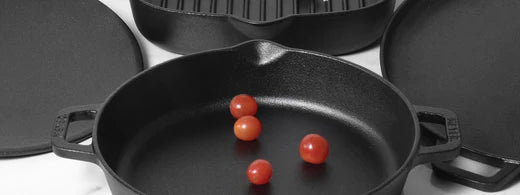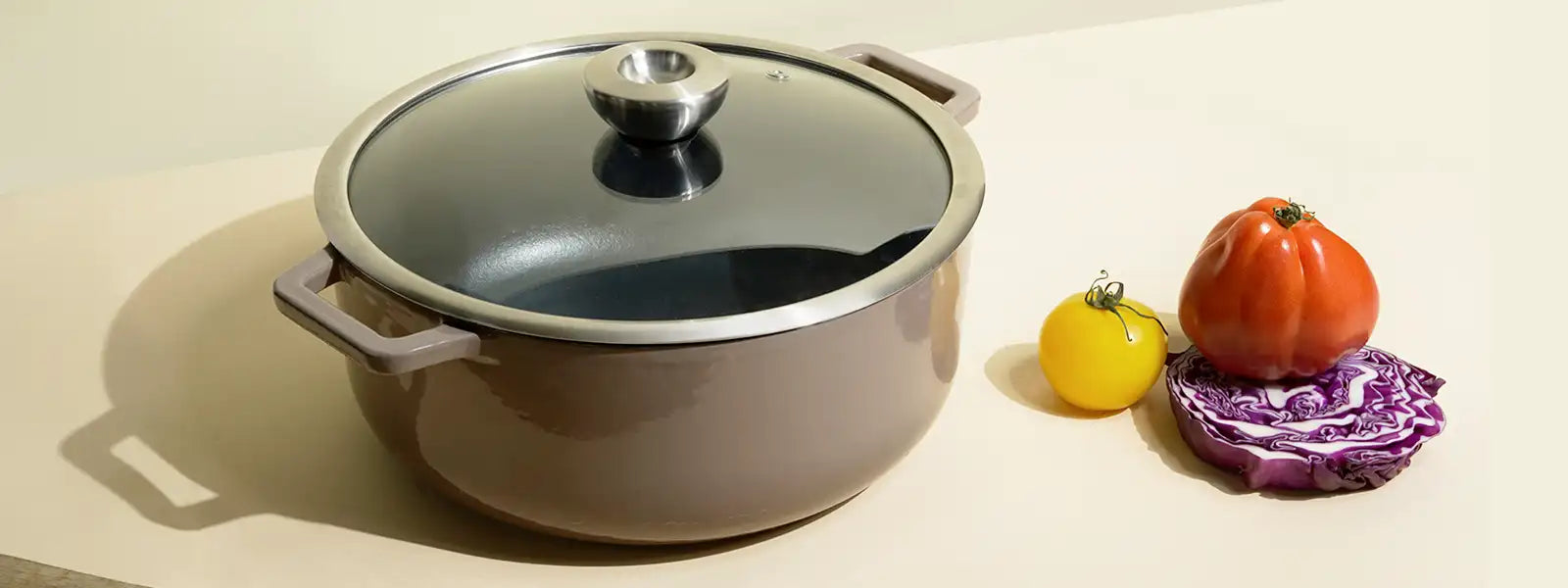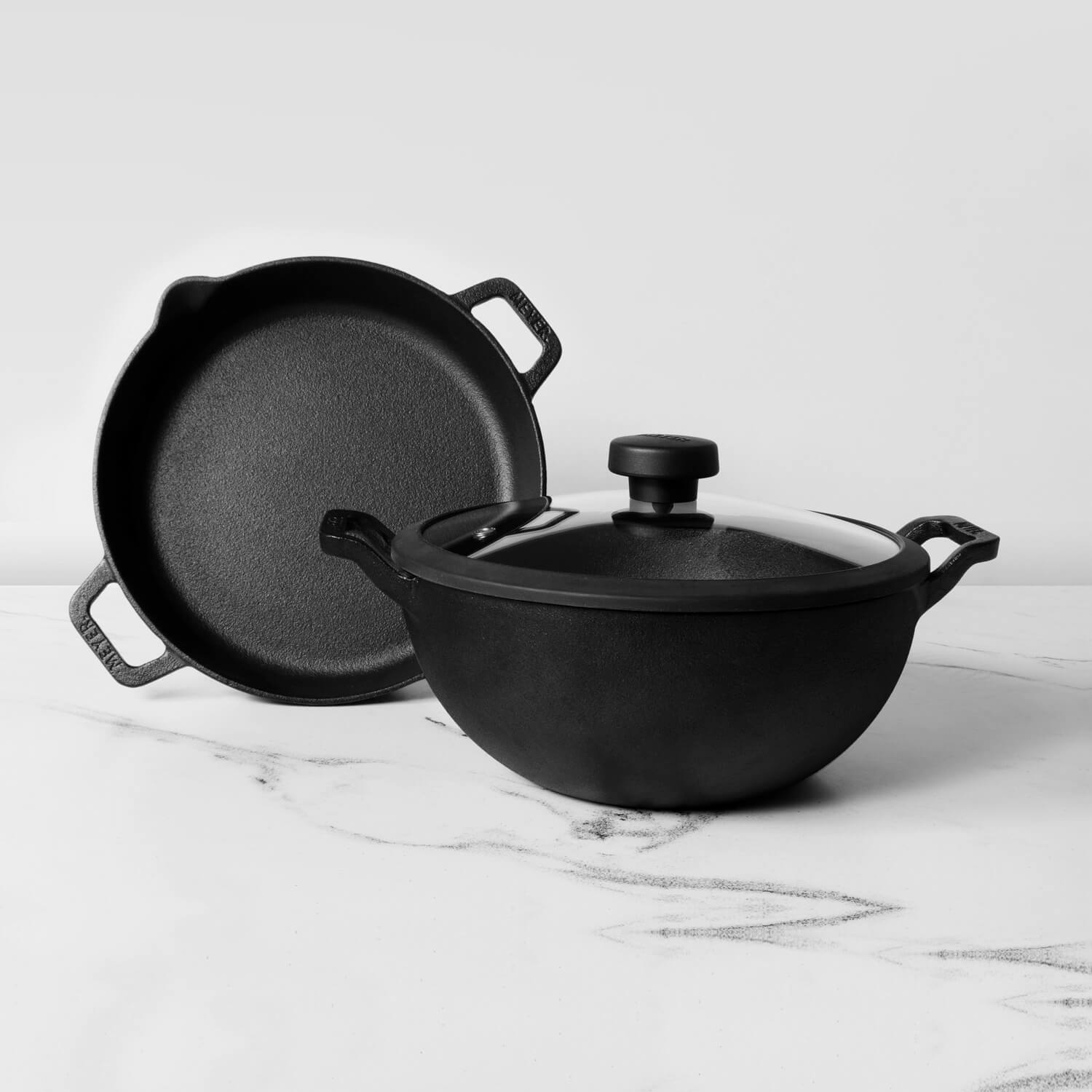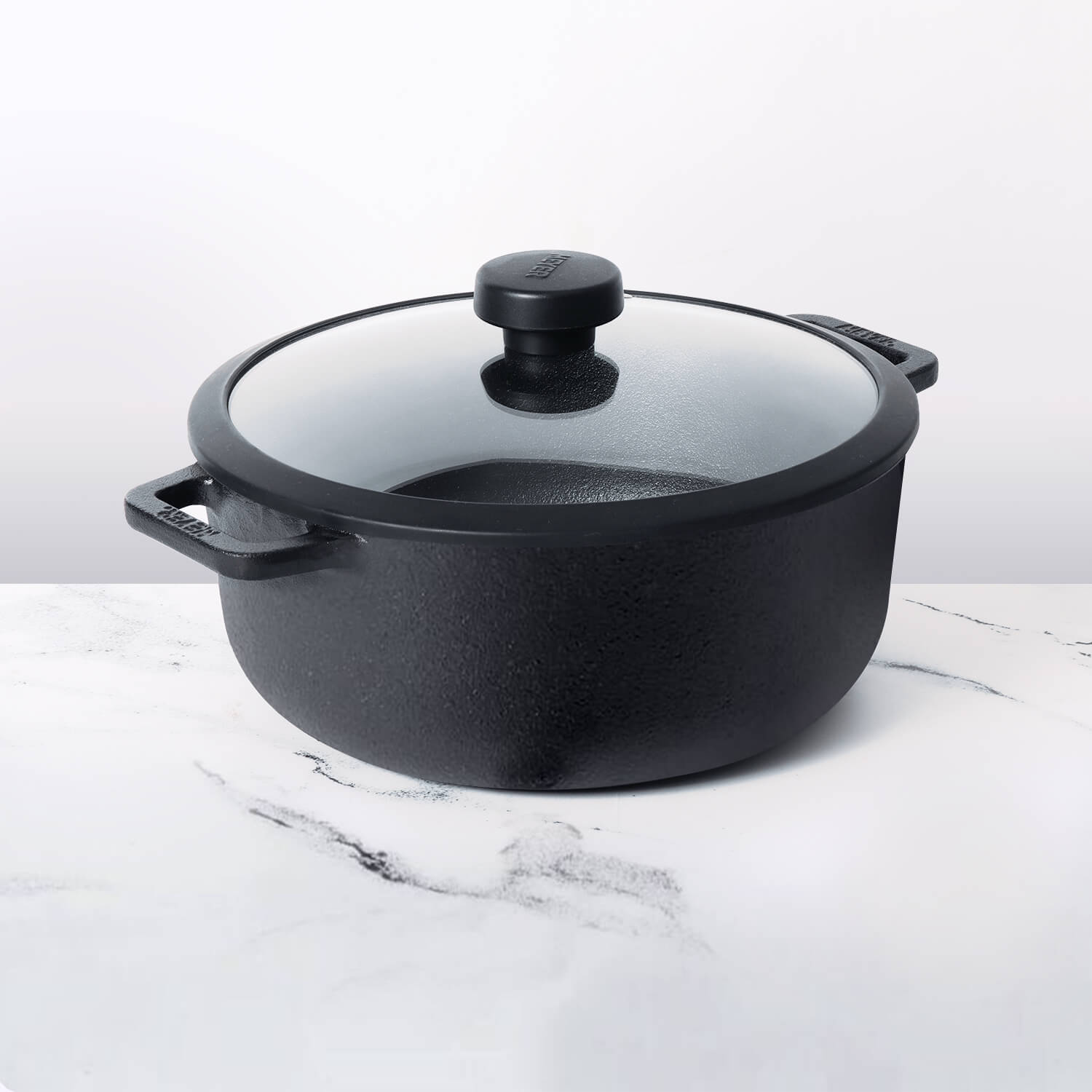A cast iron kadai is a versatile and traditional Indian cooking vessel that offers numerous benefits over other types of cookware. A high-quality cast iron kadai is perfect for cooking a variety of dishes such as curries, stir-fries, and deep-fried snacks. The kadai is deep enough to hold a generous amount of food, and its thick walls retain heat evenly, resulting in perfectly cooked dishes. Additionally, the cast iron material offers several health benefits and is a durable and long-lasting option for your kitchen. In this article, we will explore the benefits of using a cast iron kadai in your cooking, as well as some tips for proper maintenance and care.Explore the many advantages of using cast iron cookware in Indian cooking! From improved flavour to impressive durability, discover why investing in a cast iron kadai is worth it.
Table of Contents
- Introducing the Cast Iron Kadai - A Traditional Indian Cooking Pot
- A Brief History of the Ancient Indian Kitchenware and its Uses
- Benefits of Using a Cast Iron Kadai - Healthier Meals and More Flavorful Cuisine!
- The Strength and Durability of Cast Iron – The Ideal Heat Conductor for Indian Dishes
- How to Care for your Cast Iron Kadai – Keeping it in Top Condition
Introducing the Cast Iron Kadai - A Traditional Indian Cooking Pot
The cast iron kadai is a staple in Indian kitchens and is widely used for cooking a variety of dishes. It is a traditional cooking pot that has been used for centuries and is known for its durability and versatility. The kadai is typically round with a flat bottom and deep sides, making it perfect for deep-frying, sautéing, and cooking curries. The cast iron material retains heat evenly, resulting in perfectly cooked dishes, and its natural non-stick surface allows for easy food release. Additionally, cooking in a cast iron kadai offers several health benefits, as the iron leaches into the food, providing a natural source of dietary iron.
A Brief History of the Ancient Indian Kitchenware and its Uses
Indian kitchenware has a rich and ancient history, dating back thousands of years. The earliest forms of kitchenware were made from clay and were used for cooking and storing food. Over time, other materials such as copper, bronze, and iron were also used to make kitchenware.
The use of cast iron for kitchenware became popular in India during the Mughal era. Cast iron was preferred due to its durability, even heat distribution, and ability to retain heat for a long time. The earliest cast iron vessels were used for cooking rice, lentils, and stews.
As cooking techniques evolved, so did the shapes and sizes of kitchenware. The kadai, for instance, became a popular cooking pot due to its deep sides, which allowed for deep-frying and cooking of curries. The tawa, or griddle, was used for making flatbreads such as rotis and dosas.
Today, Indian kitchenware continues to evolve, with modern materials such as stainless steel and non-stick coatings being used alongside traditional materials like cast iron and copper. However, the traditional methods of cooking and the use of ancient kitchenware remain an integral part of Indian cuisine and culture.
Benefits of Using a Cast Iron Kadai - Healthier Meals and More Flavorful Cuisine!
Using a cast iron kadai offers numerous benefits, making it a popular choice among home cooks and professional chefs alike. Here are some of the top benefits of using a cast iron kadai:
Even Heat Distribution: Cast iron heats up evenly, which means that your food will cook uniformly without any hotspots. This helps to prevent burning or overcooking, ensuring that your meals turn out perfectly every time.
Natural Non-Stick Surface: Cast iron naturally becomes non-stick over time with proper seasoning, reducing the need for excess oil or butter. This makes cooking healthier, and your meals will still come out delicious and flavorful.
Durability: Cast iron is incredibly durable and can last for generations if cared for properly. It can withstand high temperatures and heavy use, making it ideal for everyday cooking.
Versatility: A cast iron kadai can be used for a variety of cooking methods, including deep-frying, sautéing, and simmering. This makes it a versatile tool in the kitchen and can be used to cook a wide range of dishes.
Overall, using a cast iron kadai offers many benefits that can help you cook healthier, tastier meals while also saving you time and money in the long run. With proper care, a cast iron kadai can be a valuable addition to your kitchen that will last for years to come.
The Strength and Durability of Cast Iron – The Ideal Heat Conductor for Indian Dishes
Cast iron is a popular material for cooking in India and around the world due to its strength and durability..
One of the main benefits of cast iron is its ability to retain heat. When cast iron is heated, it absorbs and retains the heat, allowing it to cook food evenly and consistently. This is particularly useful when cooking dishes that require long periods of simmering or slow-cooking, such as stews and curries.
Cast iron is also incredibly durable and can last for generations with proper care. It is resistant to scratches and dents, and it can withstand high temperatures without warping or cracking. This makes it an excellent investment for home cooks who want to have reliable cookware that they can use for years to come.
Another advantage of using cast iron for Indian cooking is its ability to develop a natural non-stick surface over time. With proper seasoning and care, cast iron cookware can become virtually non-stick, making it easier to cook delicate foods like dosas and crepes without sticking or burning.
Overall, cast iron is an excellent material for cooking Indian dishes due to its strength, durability, and excellent heat conductivity. Whether you're cooking up a spicy curry or preparing a crispy dosa, a well-seasoned cast iron skillet or dutch oven is an essential tool for any home cook.
How to Care for your Cast Iron Kadai – Keeping it in Top Condition
Proper care and maintenance of your cast iron kadai are essential to keep it in top condition and ensure its longevity. Here are some tips to care for your cast iron kadai:
Season your cast iron kadai: Seasoning is the process of creating a non-stick surface on your cast iron cookware. To season your kadai, coat the surface with a thin layer of oil and heat it on the stovetop or in the oven. Repeat this process several times until a non-stick surface has developed.
Clean your kadai after each use: After cooking, allow the kadai to cool down to a safe temperature before cleaning. Use a stiff brush or a non-abrasive sponge to clean the surface of the kadai with hot water and a mild detergent. Avoid using harsh chemicals or abrasive cleaners that can damage the seasoning.
Dry your kadai thoroughly: After cleaning, dry the kadai thoroughly with a towel or by placing it on the stovetop on low heat. Moisture can cause rust to form on the surface of the kadai, so make sure it is completely dry before storing it.
Store your kadai properly: Store your kadai in a dry place where it will not be exposed to moisture. To prevent scratching or damage to the seasoning, store the kadai with a layer of paper towels or cloth between each piece.
Re-season your kadai periodically: Over time, the seasoning on your kadai may wear off or become damaged. If this happens, re-season the kadai to restore its non-stick properties and protect it from rust.
By following these tips, you can keep your cast iron kadai in top condition and enjoy cooking delicious Indian dishes for years to come.
2. Meyer Pre Seasoned Kadai Without Lid,
3. Meyer Pre Seasoned Cast Iron Deep Kadai/Wok With Glass Lid
4. Meyer Enamel Cast Iron Kadai, Grey
Cast iron kadai comes in different shapes, sizes, and designs to suit various cooking needs and preferences. Here's a closer look at the different types:
Deep round bottom open cast iron kadai: This is the most common type of kadai used for cooking Indian dishes. It has a deep, rounded bottom that allows for even heat distribution, making it ideal for cooking curries, stews, and other similar dishes. The open design allows for easy stirring and turning of the food. This type of kadai is available in various sizes to suit different cooking needs.
Shallow kadai with glass lid: This type of kadai has a wide, shallow design with a glass lid. The shallow design allows for quick and even cooking of foods like stir-fries and sautés, while the glass lid allows you to monitor the cooking progress without lifting the lid. This type of kadai is available in different sizes to suit different cooking needs.
Deep flat bottom kadai with glass lid: This type of kadai has a deep, flat bottom and a glass lid. The flat bottom allows for even heat distribution, making it ideal for cooking foods like biryanis and pulao. The glass lid allows you to monitor the cooking progress without lifting the lid. This type of kadai is available in different sizes to suit different cooking needs.
In addition to these common types of kadai, there are also specialty kadai designs available, such as tawa-shaped kadai, mini kadai, and square-shaped kadai. Each type of kadai has its own unique benefits and is suitable for different cooking styles and dishes. Ultimately, the choice of kadai shape, size, and design will depend on personal cooking needs and preferences.










Leave a comment